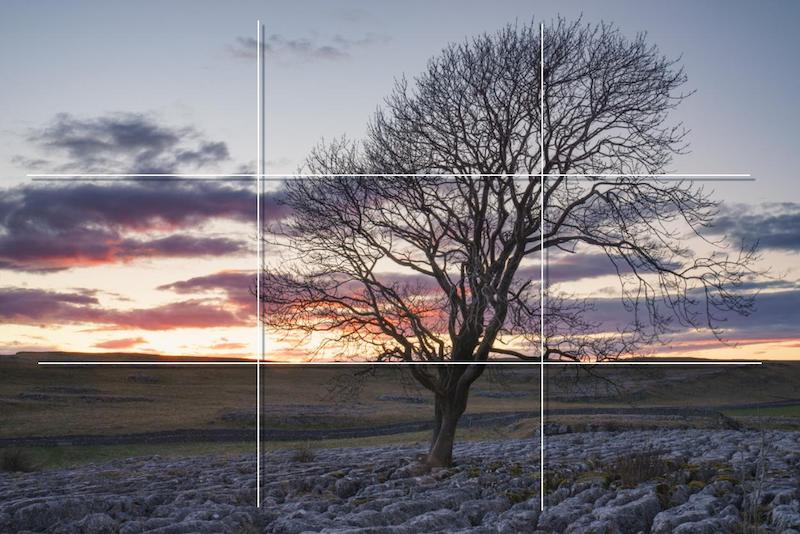Getting Creative with Composition
Episode #5 of the course Introduction to photography by Robin Whalley
Yesterday, you learned about using focus and depth of field in your photography. Today, we look at the rules of composition and how to use them to improve your photography.
Where and how you position your subject and objects in the frame is important. The process of arranging the elements of the image is known as composition. With poor composition, the image will look ugly, but strong composition creates an interesting photo. Although recognizing good and bad composition is something you learn over time, there are rules that can help you.
The Rule of Thirds
A common mistake among beginners is to always position the subject in the center of the frame. Although this can work, it’s often better to position the subject off center.

Here, a grid has been placed over the image to divide it into thirds vertically and horizontally. When you place objects along one of these lines, it makes for a stronger composition. This is known as The Rule of Thirds.
Notice that the horizon has been placed on the lower third rather than the center of the frame. This tells the viewer the sky is more important than the ground in this photo.
The rule of thirds has also been used with the tree. This is placed off center, toward the right. The main area of tree is placed toward the top right where the vertical and horizontal lines cross. Placing objects of interest where the lines intersect creates a stronger composition.
Symmetry
Sometimes, you might create a composition where symmetry is important.

Here, the reflection of the building is equally important to the image as the building itself. To stress the symmetry in the composition, the horizon has been placed in the center of the frame. This creates a feeling of balance between the top and bottom part of the image.
Leading Lines
The human brain is very good at finding patterns, even where none exist. The idea of leading lines is to arrange the objects in a scene so the viewer’s brain creates a pattern of imaginary lines. This can help relate different objects in a scene.

Here, the boats are arranged to create imaginary lines. Notice also that these lines cross at a point using the Rule of Thirds.
Leading lines can be either horizontal/vertical or diagonal. When the lines are horizontal/vertical, they create what we call a static composition. Look at the previous photograph showing a reflection. The horizon is an important leading line that has been placed horizontally. This helps create a static composition with a feeling of calm.
When leading lines are diagonal, the composition is said to be dynamic and sometimes considered more exciting.
Distance from the Subject
How much of the frame the subject occupies is important. Look at the example images above, and you will see that the subject occupies most of the frame. In the first two images, a telephoto lens has been used to magnify the subject, as it wasn’t possible to get closer. In the third image, a wide-angle lens was used, allowing the camera to move close to the subject.
This lesson has introduced a few rules of composition. However, these should not be considered rules, but rather guidelines. As you gain more experience, you will understand when you can and should break the rules of composition. Ultimately, a strong composition is when the photo looks good, even if the “rules” haven’t been followed.
Now you understand the rules of composition; tomorrow, you will learn how to avoid common compositional mistakes.
Recommended book
To learn more about composition, one of the best books to read in my opinion is Learning to See Creatively by Bryan Peterson.
Share with friends
